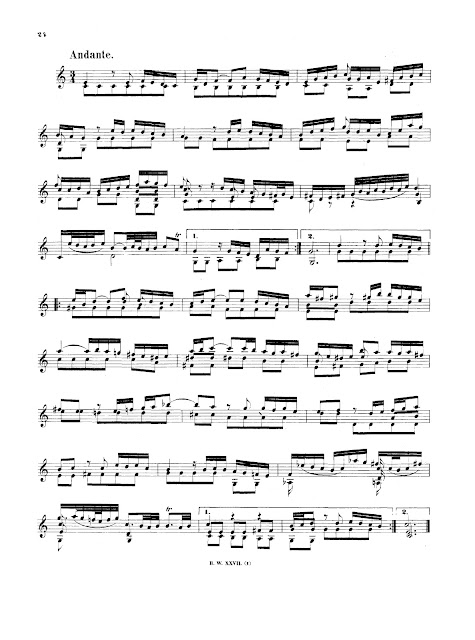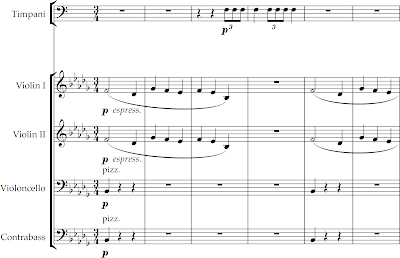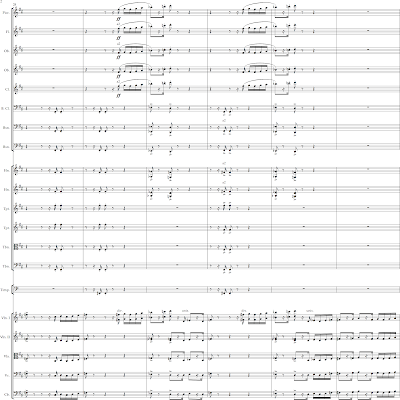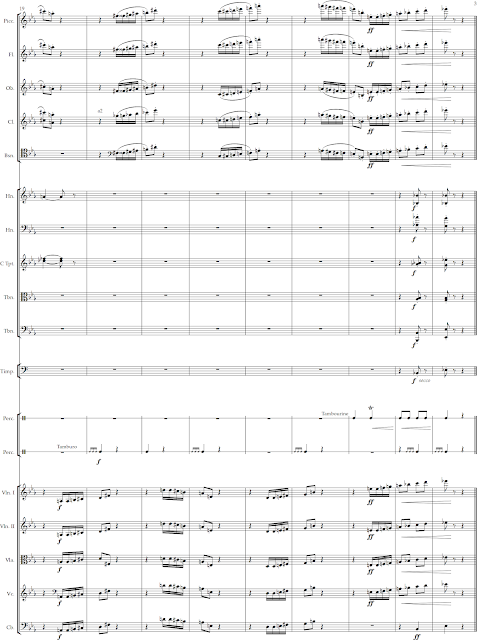CLXXVIII. DVOŘÁK, Antonin (1841-1904)
Symphony #2 in B-Flat Major, Op. 4 (1865)
1. Allegro con moto
2. Poco adagio
3. Scherzo: Allegro con brio
4. Finale: Allegro con fuoco
London Symphony Orchestra
István Kertész, cond.
[scrolling score]
(54:23)

Dvořák and Tchaikovsky are two composers who come to mind when one considers their symphonic output and the subsequent critical and/or commercial popularity of same.
Both composers' earliest symphonies are rarely performed (1-7 for Dvořák, with 8-9 being huge successes; and 1-3 for Tchaikovsky, with 4-6 being constantly programmed).
**
Here we take a peek at one of Dvořák's early efforts (he was 24) at the symphonic form --- greatly imitative of both Brahms and Wagner -- but yet, definitely with that unique Czech feeling, and glimmers of true originality ...
Anxious to get a performance, Dvořák sent the score to be bound, only to realize he was unable to pay for it. The binder kept the score.
A sympathetic friend lent him the money to retrieve the score -- but Dvořák was equally unable to pay back the friend.
The matter was finally settled when Dvořák threatened to destroy the score and the friend returned it to him in a matter of one of musical history's most altruistic acts!
**
First Movement
One is tempted to say there is a touch of influence of Beethoven's Pastoral (Post CXV) -- the repeated four-bar phrases, with the same three-against-two rhythm -- however, Dvořák's music becomes much more tempetuous and darker.
A lovely moment occurs near the end of the movement when he slows everything down (15:00) for a few moments.
The orchestration is delicious; he smartly hands off phrases between the strings, winds and brass.
Second Movement
Although the music is completely dissimilar, the 12/8 meter reminds us of the Pastoral's second movement!
At 23:20, a huge dm6/4 chord, followed by a G.P. introduces an intimate fugal interplay between the violins and high winds ... the final G major chord brings cheer to an otherwise fairly dark slow movement.
Third Movement
Labeled a scherzo, Dvořák seems overly serious. A nice touch is the half-step downwards modulation to A Major for the trio (34:57).
Fourth Movement
A beautiful moment of rich, burnished orchestration (44:19) with the melody allocated to solo horn, violas and celli ...
Despite generally unimaginative thematic material, this early symphony reminds us that composers grow as they age -- and without youthful experimentation, we wouldn't have their great later works (like his Eighth [Post XCVI] or Ninth) ...
The symphony is worth inspection due to its wonderful orchestration, alone.

























































